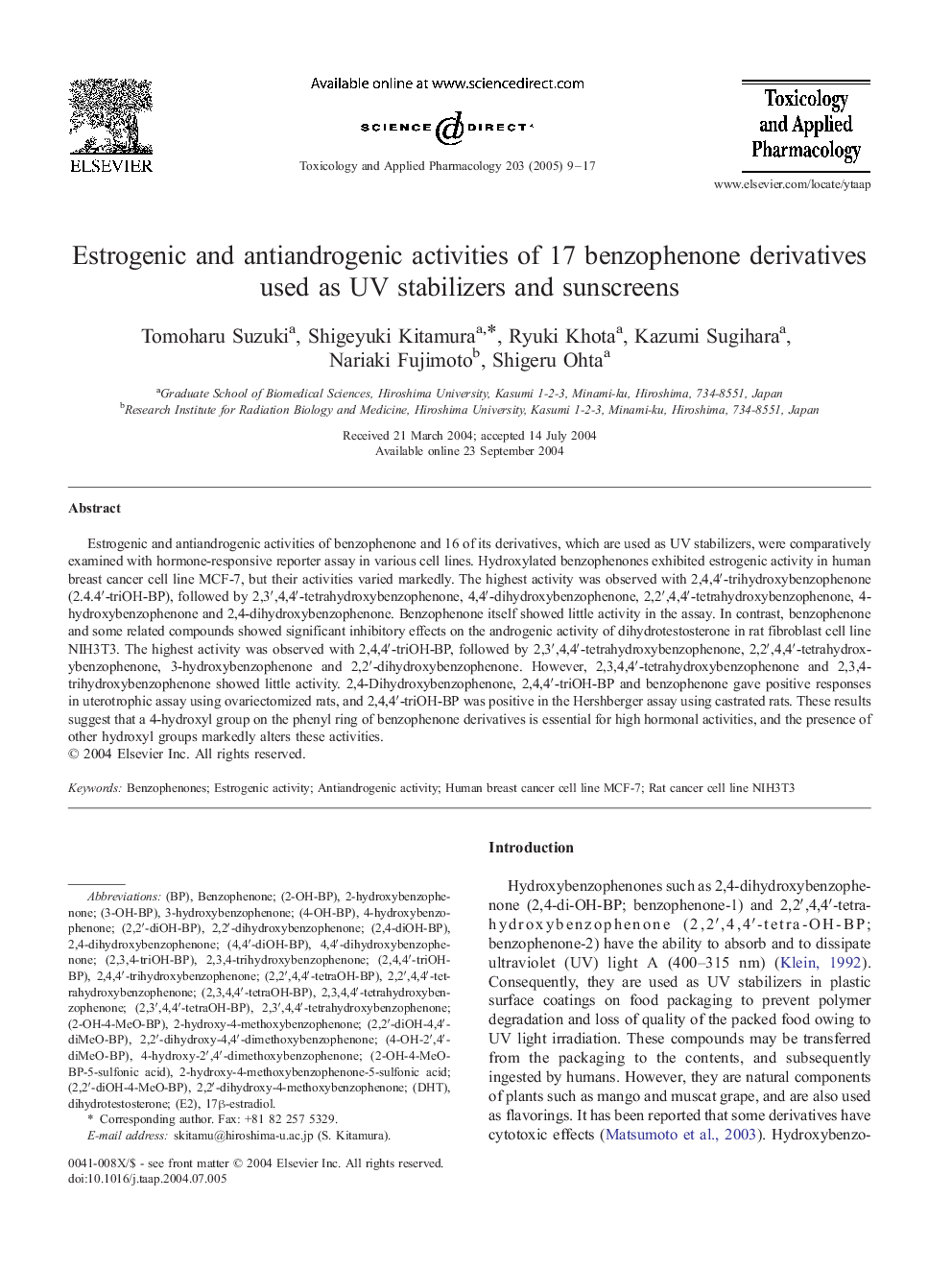| Article ID | Journal | Published Year | Pages | File Type |
|---|---|---|---|---|
| 9017944 | Toxicology and Applied Pharmacology | 2005 | 9 Pages |
Abstract
Estrogenic and antiandrogenic activities of benzophenone and 16 of its derivatives, which are used as UV stabilizers, were comparatively examined with hormone-responsive reporter assay in various cell lines. Hydroxylated benzophenones exhibited estrogenic activity in human breast cancer cell line MCF-7, but their activities varied markedly. The highest activity was observed with 2,4,4â²-trihydroxybenzophenone (2.4.4â²-triOH-BP), followed by 2,3â²,4,4â²-tetrahydroxybenzophenone, 4,4â²-dihydroxybenzophenone, 2,2â²,4,4â²-tetrahydroxybenzophenone, 4-hydroxybenzophenone and 2,4-dihydroxybenzophenone. Benzophenone itself showed little activity in the assay. In contrast, benzophenone and some related compounds showed significant inhibitory effects on the androgenic activity of dihydrotestosterone in rat fibroblast cell line NIH3T3. The highest activity was observed with 2,4,4â²-triOH-BP, followed by 2,3â²,4,4â²-tetrahydroxybenzophenone, 2,2â²,4,4â²-tetrahydroxybenzophenone, 3-hydroxybenzophenone and 2,2â²-dihydroxybenzophenone. However, 2,3,4,4â²-tetrahydroxybenzophenone and 2,3,4-trihydroxybenzophenone showed little activity. 2,4-Dihydroxybenzophenone, 2,4,4â²-triOH-BP and benzophenone gave positive responses in uterotrophic assay using ovariectomized rats, and 2,4,4â²-triOH-BP was positive in the Hershberger assay using castrated rats. These results suggest that a 4-hydroxyl group on the phenyl ring of benzophenone derivatives is essential for high hormonal activities, and the presence of other hydroxyl groups markedly alters these activities.
Keywords
Related Topics
Life Sciences
Environmental Science
Health, Toxicology and Mutagenesis
Authors
Tomoharu Suzuki, Shigeyuki Kitamura, Ryuki Khota, Kazumi Sugihara, Nariaki Fujimoto, Shigeru Ohta,
